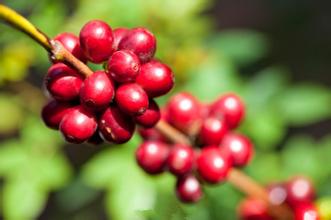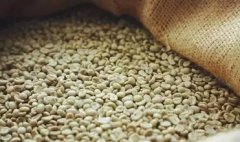A brief introduction to the flavor and aroma characteristics of Colombian Huilan boutique coffee beans with soft taste

Colombian coffee has a balanced flavor and a smooth taste, just like a gentleman in coffee. He has a wide range of producing areas, such as Medellin, Armenia and Manizales, which are commonly known as "MAM".
Growers of Colombian coffee
High quality Coffee in Colombian Coffee-Arabica Coffee
The Arabica species (scientific name Coffee Arabica) has to be mentioned in the Colombian coffee species. Arabica coffee trees grow between 900m-2000 Michael degrees above sea level; they are cold-resistant, and the suitable growth temperature is 15-24 ℃; they need more humidity, and the annual rainfall is not less than 1500 milliliters; at the same time, they also require higher cultivation techniques and conditions. So you can now understand why the Dess Mountains in the coffee growing area were used as the background when the signs were explained above.
Arabica coffee accounts for about 65% and 80% of the world's coffee beans. Arabica coffee beans are longer, flatter, more complete and greener.
Export and Management of Colombian Coffee
Compared with other producing countries, Colombia is more concerned with developing products and promoting production. It is this, coupled with its superior geographical and climatic conditions, that makes Colombian coffee excellent in quality and delicious and famous all over the world. The status of coffee in Colombia is evident in the following example: all vehicles entering the country must be sprayed and sterilized so as not to inadvertently cause disease and damage coffee trees.
In addition, the export management of the coffee trade in Colombia is mainly the responsibility of the National Federation of Coffee owners. It is an unofficial industry organization with several government ministers as its members. Colombian law clearly stipulates that only private businessmen with federation licenses can export coffee in order to maintain the image of Colombian coffee in the world and to ensure stable government revenue in the coffee trade.
It has long been thought to be monopolized and underwritten by Japanese roasters. In recent years, the Colombian government has asked Japanese roasters to withdraw some of their shares in order to encourage free trade. The Colombian National Federation of Coffee growers is also paying more and more attention to the market. In 2007, Luis Fernando Sambel, intellectual property director of the National Federation of Coffee growers of Colombia, said in an interview with a Chinese reporter, "We are doing a feasibility study on entering the Chinese market." He believes that Chinese consumers, like Japanese consumers, can change from liking tea to also liking coffee.
St. Augustine has a natural environment for the production of high-quality coffee, rich groundwater, fertile volcanic ash soil, suitable altitude, rich precipitation and suitable sunshine, etc., which is a very favorable environment for the production of the highest quality coffee. The brand of coffee in Huilan area is Huila, although it is easy to be confused, but if you know it is St. Augustine coffee in Huilan area, it will not be confused. St. Augustine is located in the south of Huilan area. Most of them are mainly Arabica tin cards, which are cultivated in the shade. Generally hand-picked, most of the treatment is natural drying speaking of Colombia's Huilan coffee, many people are no stranger, Huilan is the representative of Colombian boutique coffee. St. Augustine is located in southern Colombia. Because it is located in the cliff area, the transportation infrastructure is very imperfect. In addition, due to frequent civil wars in the region, theft and robbery in the transportation of raw coffee beans often occur in this area.
The pure taste of Colombian coffee, in addition to the natural environment with the most favorable conditions for coffee growth, is inseparable from the hard work of local growers. In Colombia, coffee cultivation has reached 1.07 million hectares, there are about 302000 coffee plantations in the country, and 30 to 40 per cent of the rural population depends directly on coffee production. Although there are many farms in Colombia, they are not large in area. The area of each farm is only about 2 hectares, and more than 80% of the coffee plantations have only about 5000 coffee trees, an average of 3000. Thus it can be seen that agriculture in Colombia belongs to the small-scale farm type. The locals plant tall trees or banana trees around the coffee trees. Build an Arbor for coffee trees at the seedling stage to ensure the cool and humid environment needed for coffee growth. Due to the high humidity, small temperature difference and slow ripening of coffee beans in the coffee forest, it is conducive to the accumulation of caffeine and aromatic substances, so the quality of coffee is the best.
Arabica coffee has a varied and broad potential flavor. Arabica coffee produced in different regions, different elevations and different climatic areas usually has its own characteristics. It smells like grass when it is not roasted, and after proper roasting, it shows fruity (light baked) and caramel sweet (deep roasted). Her excellent flavor and aroma make her the only coffee among these native species that can be drunk directly and alone. As a result, she won more praise than any other coffee: known as "green gold".
Colombia huila, Colombia: located in the southwest of Colombia, it is one of the major coffee growing areas. Because there are famous coffee cultivation places in Huilan area, the names of small areas become brand names and circulate. Although the cultivation conditions in this area are also very good, the cultivation infrastructure of coffee cultivation farm and surrounding conditions is not well developed. It is a great pity that the raw bean drying equipment or washing processing facilities are not perfect. The coffee in Huilan area has a strong taste and heavy texture. In particular, the coffee in Huilan area can be called high-quality coffee with the aroma of nuts, chocolate and caramel and suitable acidity. Aromas such as caramel and caramel and suitable acidity can be called high-quality coffee.
Colombia's boutique bean producing areas are mainly in the south, more than 1500 meters above sea level, including San Augustin, Huila in Huilan province, Popayan, Cauca in Cauca province, Nari ñ o province, and Tolima province, all of which have delicate sour and raspberry aromas, caramel aromas and sweet Colombian coffee dates back to 1808. A priest brought coffee to Colombia for the first time from the French Antilles via Venezuela. The suitable climate in Colombia provides a real "natural pasture" for coffee. Since then, coffee trees have taken root in this country. The country has also become the second largest coffee producer after Brazil, the world's largest exporter of Arabica coffee beans and the world's largest exporter of washed coffee beans. Colombian coffee is a representative and excellent variety of Arabica coffee, and it is also a traditional deep-roasted coffee with a strong and memorable taste. Its aroma is rich and thick, with clear high-quality acidity, high balance, sometimes nutty, lingering aftertaste, both in terms of appearance and quality, Colombian coffee is the best. Like a charming and unrestrained woman, just right.
Important Notice :
前街咖啡 FrontStreet Coffee has moved to new addredd:
FrontStreet Coffee Address: 315,Donghua East Road,GuangZhou
Tel:020 38364473
- Prev

A brief introduction to the treatment method of grinding degree and baking degree of chocolate sweet bourbon coffee beans
Bourbon coffee (French: Caf Bourbon) is a kind of coffee produced by growing coffee trees in bourbon cultivation of Arabica coffee. Bourbon coffee was originally grown in Reunion, which was also known as le Bourbon Island before 1789. It was later occupied by France to connect with the African continent and Latin America, and it is now the two most popular Arabica coffee producers in the world.
- Next

A brief introduction to the history and culture of the origin and development of fruit-flavored Colombian Huilan boutique coffee beans
Colombia's boutique bean producing areas are mainly in the south, with an elevation of more than 1500 meters, including San Augustin, Huila in Huilan Province, Popayan, Cauca in Cauca Province, Nari ñ o Province, and Tolima Province. The products of these places all have delicate sour and raspberry aromas, caramel aromas and sweet Colombian coffee.
Related
- Detailed explanation of Jadeite planting Land in Panamanian Jadeite Manor introduction to the grading system of Jadeite competitive bidding, Red bid, Green bid and Rose Summer
- Story of Coffee planting in Brenka region of Costa Rica Stonehenge Manor anaerobic heavy honey treatment of flavor mouth
- What's on the barrel of Blue Mountain Coffee beans?
- Can American coffee also pull flowers? How to use hot American style to pull out a good-looking pattern?
- Can you make a cold extract with coffee beans? What is the right proportion for cold-extracted coffee formula?
- Indonesian PWN Gold Mandrine Coffee Origin Features Flavor How to Chong? Mandolin coffee is American.
- A brief introduction to the flavor characteristics of Brazilian yellow bourbon coffee beans
- What is the effect of different water quality on the flavor of cold-extracted coffee? What kind of water is best for brewing coffee?
- Why do you think of Rose Summer whenever you mention Panamanian coffee?
- Introduction to the characteristics of authentic blue mountain coffee bean producing areas? What is the CIB Coffee Authority in Jamaica?

